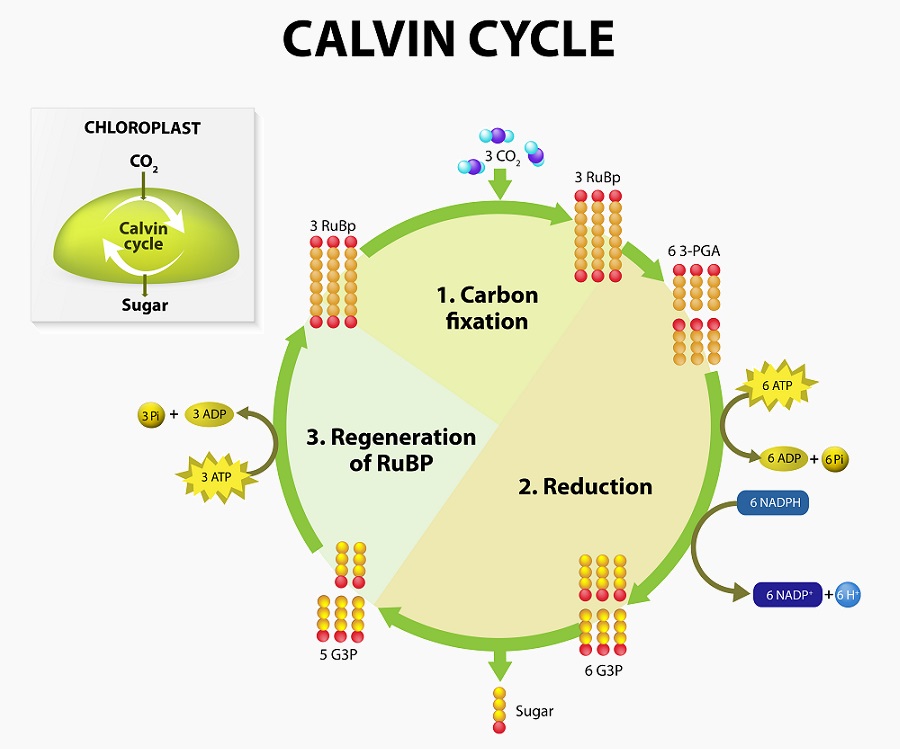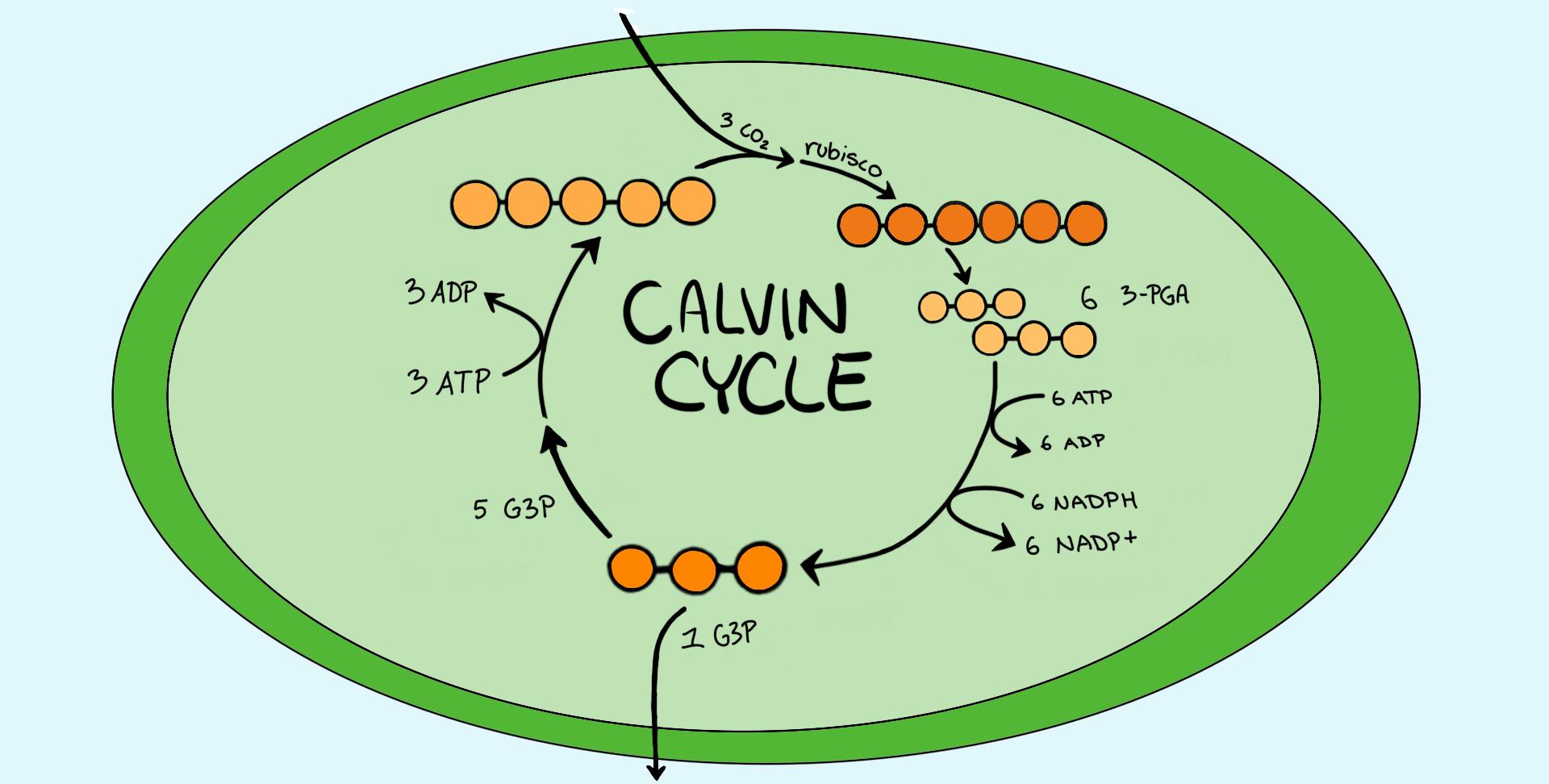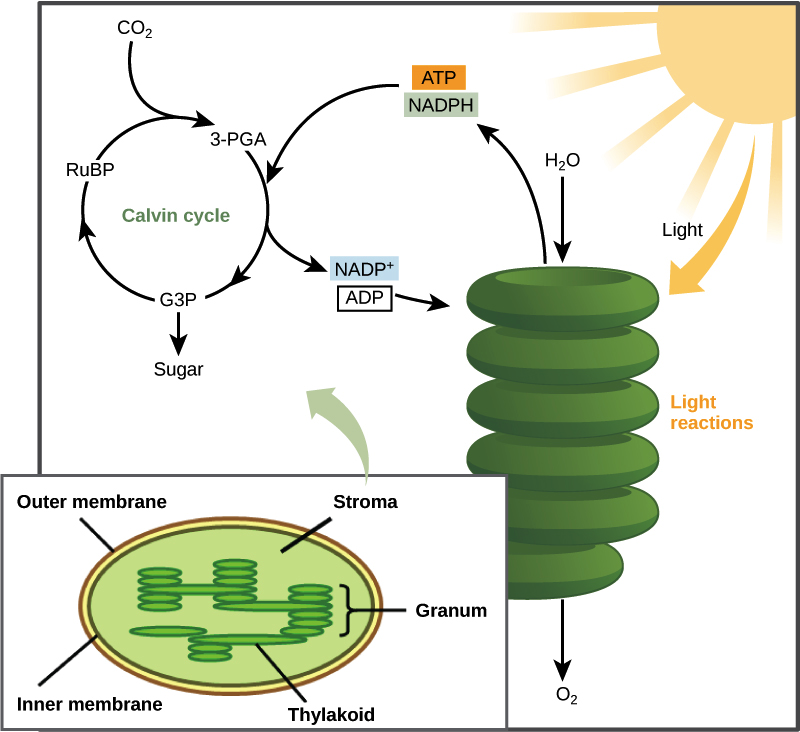Does the Calvin Cycle take place in the stroma? The answer, quite simply, is yes. The Calvin Cycle, a crucial part of photosynthesis, unfolds within the chloroplast stroma, a semi-fluid matrix that surrounds the thylakoid membranes. This intricate dance of biochemical reactions, named after its discoverer Melvin Calvin, is responsible for converting carbon dioxide into glucose, the primary fuel source for life on Earth.
Imagine the stroma as a bustling workshop, where the building blocks of life are assembled with precision and efficiency.
The chloroplast, the green powerhouse of plant cells, is divided into two distinct compartments: the thylakoid membranes and the stroma. The thylakoid membranes, stacked like pancakes, are the site of light-dependent reactions, where sunlight is captured and converted into chemical energy. The stroma, on the other hand, is the location of the Calvin Cycle, the light-independent reactions. This compartment is rich in enzymes and other molecules necessary for the cycle’s intricate steps.
The Calvin Cycle: Does The Calvin Cycle Take Place In The Stroma

The Calvin cycle, also known as the Calvin-Benson cycle, is a series of biochemical reactions that take place in the stroma of chloroplasts during photosynthesis. This cycle is responsible for converting carbon dioxide from the atmosphere into sugar, which serves as the primary source of energy for plants and other photosynthetic organisms.
Inputs and Outputs of the Calvin Cycle
The Calvin cycle requires several inputs to function, including carbon dioxide, ATP, and NADPH. These inputs are provided by the light-dependent reactions of photosynthesis. The primary output of the Calvin cycle is glucose, a six-carbon sugar that provides energy to the plant. In addition to glucose, the cycle also produces water, which is released back into the environment.
Steps of the Calvin Cycle
The Calvin cycle can be divided into three main stages:
- Carbon Fixation: In this stage, carbon dioxide from the atmosphere is incorporated into an organic molecule, ribulose-1,5-bisphosphate (RuBP). This reaction is catalyzed by the enzyme RuBisCO. The product of this reaction is an unstable six-carbon molecule that quickly breaks down into two molecules of 3-phosphoglycerate (3-PGA).
- Reduction: In this stage, 3-PGA is converted into glyceraldehyde-3-phosphate (G3P) using energy from ATP and reducing power from NADPH. This reaction is catalyzed by the enzyme glyceraldehyde-3-phosphate dehydrogenase. G3P is a three-carbon sugar that can be used to build other organic molecules, including glucose.
- Regeneration of RuBP: In this stage, some of the G3P molecules are used to regenerate RuBP, which allows the cycle to continue. This process involves a series of complex reactions that require energy from ATP.
Key Enzymes Involved in the Calvin Cycle, Does the calvin cycle take place in the stroma
Several key enzymes play critical roles in the Calvin cycle, including:
- RuBisCO: This enzyme catalyzes the initial step of carbon fixation, where carbon dioxide is incorporated into RuBP. RuBisCO is one of the most abundant enzymes on Earth and is essential for photosynthesis.
- Glyceraldehyde-3-phosphate dehydrogenase: This enzyme catalyzes the reduction of 3-PGA to G3P.
- Phosphoribulokinase: This enzyme catalyzes the phosphorylation of ribulose-5-phosphate to RuBP.
The Stroma

The stroma is a semi-fluid, colorless matrix that fills the chloroplast, the organelle responsible for photosynthesis in plant cells. It is the site of the Calvin cycle, the second stage of photosynthesis, where carbon dioxide is converted into glucose.The stroma is a dynamic environment that houses a variety of enzymes, proteins, and other molecules essential for photosynthesis. It also contains a network of interconnected membranes called thylakoids, which are the sites of the light-dependent reactions of photosynthesis.
Structure and Function of the Stroma
The stroma is a complex and highly organized compartment within the chloroplast. It is enclosed by the inner membrane of the chloroplast and contains a variety of components, including:
- Enzymes: The stroma contains numerous enzymes that catalyze the reactions of the Calvin cycle, including RuBisCO, the enzyme responsible for fixing carbon dioxide.
- Proteins: The stroma also contains various proteins involved in photosynthesis, such as those involved in the synthesis of carbohydrates and other organic molecules.
- DNA: Chloroplasts have their own DNA, called chloroplast DNA (cpDNA), which encodes for some of the proteins involved in photosynthesis. This DNA is located in the stroma.
- Ribosomes: The stroma contains ribosomes, which are involved in the synthesis of proteins.
- Starch granules: Starch granules are storage sites for excess glucose produced during photosynthesis.
Why the Calvin Cycle Occurs in the Stroma
The Calvin cycle occurs in the stroma for several reasons:
- Presence of necessary enzymes: The stroma contains all the enzymes required for the Calvin cycle, including RuBisCO, which catalyzes the first step of the cycle.
- Proximity to the thylakoids: The stroma is directly connected to the thylakoid membranes, which are the sites of the light-dependent reactions. This close proximity allows for efficient transfer of energy and reducing power from the light-dependent reactions to the Calvin cycle.
- Presence of ATP and NADPH: The light-dependent reactions produce ATP and NADPH, which are essential for the Calvin cycle. These molecules are readily available in the stroma.
Advantages of the Stroma as the Site for the Calvin Cycle
The stroma provides several advantages as the site for the Calvin cycle:
- Controlled environment: The stroma provides a controlled environment for the Calvin cycle, ensuring optimal conditions for the reactions to occur.
- Efficient energy transfer: The proximity of the stroma to the thylakoids allows for efficient transfer of energy and reducing power from the light-dependent reactions.
- Accessibility of essential molecules: The stroma contains all the necessary enzymes, proteins, and molecules required for the Calvin cycle.
Key Steps of the Calvin Cycle

The Calvin cycle, also known as the Calvin-Benson cycle, is a series of biochemical reactions that take place in the stroma of chloroplasts during photosynthesis. This cycle uses the energy stored in ATP and NADPH produced during the light-dependent reactions to convert carbon dioxide into glucose, a usable form of energy for the plant. The Calvin cycle can be divided into three main stages: carbon fixation, reduction, and regeneration.
Carbon Fixation
The carbon fixation step is the initial step of the Calvin cycle, where carbon dioxide from the atmosphere is incorporated into an organic molecule. This process is catalyzed by the enzyme RuBisCO (ribulose-1,5-bisphosphate carboxylase/oxygenase), which is one of the most abundant enzymes on Earth. RuBisCO binds to both carbon dioxide and oxygen, but its primary function is to catalyze the reaction between carbon dioxide and RuBP (ribulose-1,5-bisphosphate), a five-carbon sugar.
The product of this reaction is an unstable six-carbon compound that immediately splits into two molecules of 3-PGA (3-phosphoglycerate), a three-carbon compound.
The reaction catalyzed by RuBisCO can be represented as follows:CO2 + RuBP → 2 3-PGA
Reduction
The reduction step involves the conversion of 3-PGA into G3P (glyceraldehyde-3-phosphate), a three-carbon sugar that can be used to synthesize glucose. This step requires energy from ATP and reducing power from NADPH, both of which are produced during the light-dependent reactions. The reduction process involves two main steps:
- Phosphorylation: 3-PGA is first phosphorylated by ATP to form 1,3-bisphosphoglycerate.
- Reduction: 1,3-bisphosphoglycerate is then reduced by NADPH to form G3P.
Regeneration
The regeneration step involves the regeneration of RuBP from G3P. This step is essential for the cycle to continue. For every six molecules of carbon dioxide fixed, only one molecule of G3P is produced as a net gain. The remaining five molecules of G3P are used to regenerate RuBP, ensuring that the cycle can continue. The regeneration of RuBP involves a series of complex reactions that are catalyzed by several enzymes.
These reactions ultimately result in the formation of RuBP, which can then accept another molecule of carbon dioxide, restarting the Calvin cycle.
The Importance of the Calvin Cycle
The Calvin cycle is the crucial process that converts carbon dioxide from the atmosphere into glucose, a sugar that fuels the plant’s growth and development. This cycle is a cornerstone of life on Earth, as it provides the foundation for the food chain and the oxygen we breathe.
The Significance of the Calvin Cycle in Producing Glucose
The Calvin cycle is the primary pathway for carbon fixation in plants. It takes place in the stroma of chloroplasts and uses the energy stored in ATP and NADPH, which are produced during the light-dependent reactions of photosynthesis. The cycle begins with the incorporation of carbon dioxide into an existing five-carbon sugar molecule called RuBP (ribulose bisphosphate). This process is catalyzed by the enzyme RuBisCO, which is one of the most abundant enzymes on Earth.
The resulting six-carbon molecule is unstable and quickly breaks down into two molecules of 3-PGA (3-phosphoglycerate).
- Through a series of enzymatic reactions, 3-PGA is converted into G3P (glyceraldehyde 3-phosphate), a three-carbon sugar.
- Only one out of every six G3P molecules produced is used to synthesize glucose. The remaining five G3P molecules are recycled to regenerate RuBP, ensuring the continuous operation of the Calvin cycle.
Glucose, the end product of the Calvin cycle, is a vital energy source for plants. It is used to fuel cellular respiration, providing energy for growth, reproduction, and other essential processes. Additionally, glucose can be stored as starch, providing a reserve of energy for later use.
The Connection Between the Calvin Cycle and Other Cellular Processes
The Calvin cycle is intricately linked to other cellular processes, including:
- Photosynthesis: The Calvin cycle is the second stage of photosynthesis, following the light-dependent reactions. It utilizes the ATP and NADPH produced during the light-dependent reactions to convert carbon dioxide into glucose.
- Cellular Respiration: Glucose produced by the Calvin cycle is the primary fuel for cellular respiration. This process breaks down glucose to release energy in the form of ATP, which powers various cellular activities.
- Growth and Development: Glucose provides the building blocks for plant growth and development. It is used to synthesize cellulose, a structural component of cell walls, and other essential molecules.
Examples of How the Calvin Cycle Contributes to Plant Growth and Development
The Calvin cycle plays a critical role in plant growth and development by providing the essential building blocks for various processes. Here are some examples:
- Photosynthesis: The Calvin cycle is the foundation of photosynthesis, allowing plants to convert light energy into chemical energy in the form of glucose. This process is essential for plant survival and growth.
- Biomass Production: The glucose produced by the Calvin cycle is used to synthesize cellulose, a structural component of plant cell walls. Cellulose is a major contributor to plant biomass, which forms the basis of the food chain.
- Fruit and Seed Development: Glucose is transported to fruits and seeds, where it is used to fuel their growth and development. This ensures the production of viable offspring and the continuation of the plant’s life cycle.
- Stress Tolerance: The Calvin cycle is involved in the production of various metabolites that help plants cope with environmental stresses such as drought, salinity, and extreme temperatures. These metabolites provide protection against oxidative damage and help maintain cellular function under challenging conditions.
The Calvin Cycle, a vital engine of life, is a testament to the elegance and efficiency of nature’s design. Within the chloroplast stroma, this remarkable process transforms carbon dioxide into the essential fuel for all living organisms. The intricate dance of enzymes, molecules, and reactions within the stroma is a symphony of life, constantly replenishing the Earth with the energy needed to sustain its vibrant ecosystems.
Understanding the Calvin Cycle, its location within the stroma, and its vital role in photosynthesis is key to appreciating the interconnectedness of life on our planet.
Frequently Asked Questions
What are the main products of the Calvin Cycle?
The Calvin Cycle produces glucose, a sugar that serves as the primary energy source for plants and other organisms. It also regenerates RuBP, a five-carbon sugar that is essential for the cycle to continue.
How does the Calvin Cycle contribute to plant growth and development?
The glucose produced by the Calvin Cycle provides the energy and building blocks for plant growth and development, including the production of new leaves, stems, roots, and flowers.
What is the role of ATP and NADPH in the Calvin Cycle?
ATP and NADPH, produced during the light-dependent reactions of photosynthesis, provide the energy and reducing power necessary for the Calvin Cycle to convert carbon dioxide into glucose.
Why is the Calvin Cycle considered a light-independent reaction?
The Calvin Cycle does not directly require sunlight to function. It relies on the energy and reducing power generated by the light-dependent reactions, which are stored in ATP and NADPH.






